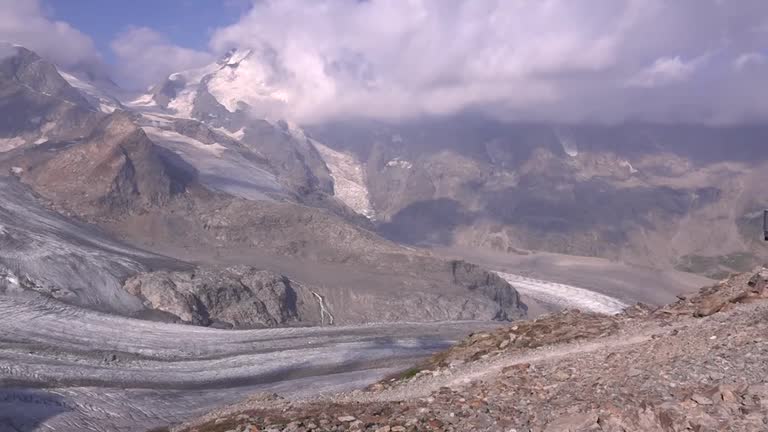From the way 45-year-old Swiss glaciologist Andreas Linsbauer bounds over icy crevasses, you would never guess he was carrying 10 kg of steel equipment needed to chart the decline of Switzerland’s glaciers.
Normally, he heads down the paths on the massive Morteratsch Glacier in late September, the end of the summer melt season in the Alps. But exceptionally high ice loss this year has brought him to this 15-square-kilometer (5.8-square-mile) amphitheatre of ice two months early for emergency maintenance work.
The measuring poles he uses to track changes in the depth of the pack are at risk of dislodging entirely as the ice melts away and he needs to drill new holes.
The Alps’ glaciers are on track for their highest mass losses in at least 60 years of record keeping, data shared exclusively with Reuters shows. By looking at the difference in how much snow fell in winter, and how much ice melts in the summer, scientists can measure how much a glacier has shrunk in any given year.
Since last winter, which brought relatively little snowfall, the Alps have sweltered through two big early summer heatwaves – including one in July marked by temperatures near 30 Celsius (86 Fahrenheit) in the Swiss mountain village of Zermatt.
During this heatwave, the elevation at which water froze was measured at a record high of 5,184 meters (17,000 feet) – at an altitude higher than Mont Blanc’s — compared with the normal summer level of between 3,000-3,500 meters (9,800-11,500 feet).
Most of the world’s mountain glaciers — remnants of the last ice age — are retreating due to climate change. But those in the European Alps are especially vulnerable because they are smaller with relatively little ice cover. Meanwhile, temperatures in the Alps are warming at around 0.3C per decade — around twice as fast as the global average.
If greenhouse gas emissions continue to rise, the Alps glaciers are expected to lose more than 80% of their current mass by 2100. Many will disappear regardless of whatever emissions action is taken now, thanks to global warming baked in by past emissions, according to a 2019 report by the UN Intergovernmental Panel on Climate Change.
Already, Morteratsch is much changed from the glacier depicted on the region’s tourist maps. The long tongue that once reached deep into the valley below has shrunk back by nearly 3 kilometers (2 miles), while the depth of the snow and ice pack has thinned by up to 200 meters (656 feet). A parallel glacier, Pers flowed into it until 2017 but has now receded so much that an expanding strip of grit lies between them.
Reuters spoke with glaciologists in Austria, France, and Italy who confirmed that glaciers there were on track for record losses.
Seasonal snowfall, apart from replenishing ice lost during summer, protects glaciers from further melt by providing a white cover that reflects sunlight back out to atmosphere better than darker ice – sullied by dust or pollution – can do.
This year’s Alpine ice losses, registered even before the biggest melt month of August, surprised scientists to some extent, as many of the glaciers had already lost their lower-lying snouts. Because they had retreated up the mountain, where temperatures are cooler, scientists thought they should have been better protected.
(Reuters)






